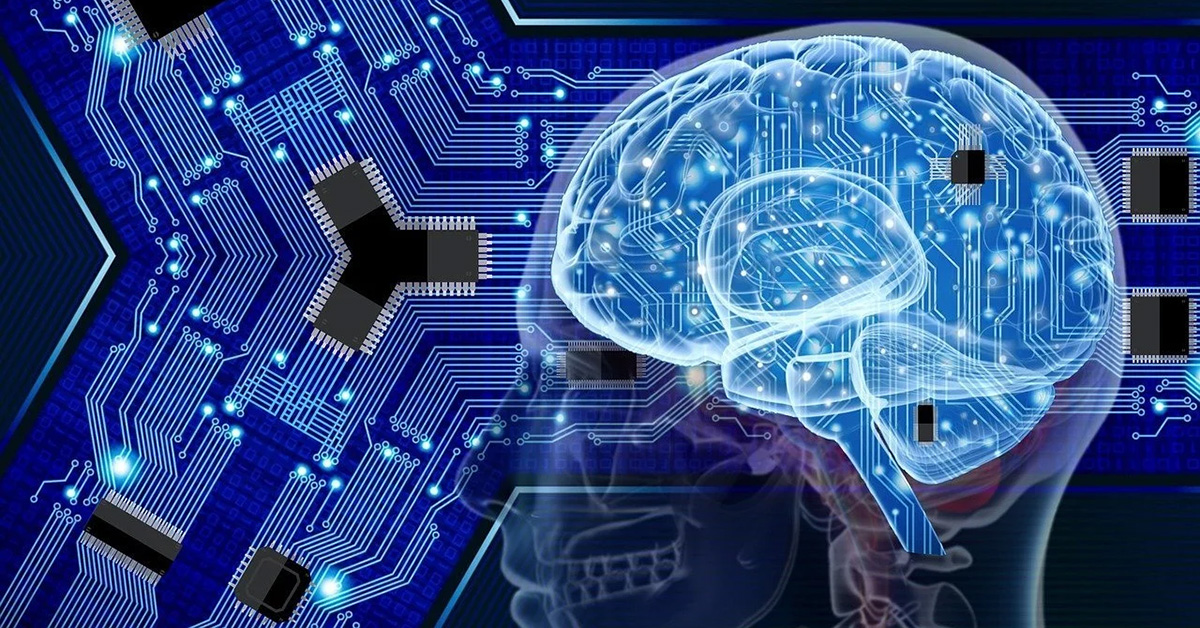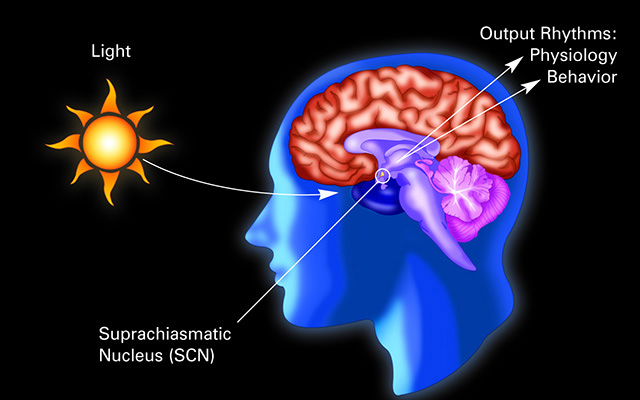New research suggests spinal cord and brainstem are essential for processing touch signals as they travel to the brain
Tag: Neuroscience

Artificial Neural Networks Learn Better When They Spend Time Not Learning at All
UC San Diego researchers discuss how mimicking sleep patterns of the human brain in artificial neural networks may help mitigate the threat of catastrophic forgetting in the latter, boosting their utility across a spectrum of research interests.
Brain Organoids Reveal in Detail the Harms of Prenatal Alcohol Exposure
UC San Diego researchers used human brain organoids to study the effects of prenatal alcohol exposure on neural development, revealing significant harms in molecular detail.
Novel Device Measures Nerve Activity That May Help Treatment Sepsis and PTSD
Engineers and physicians at UC San Diego have developed a device to non-invasively measure cervical nerve activity in humans, a new tool they say could potentially inform and improve treatments for patients with sepsis or post-traumatic stress disorder.
New FDA-Approved Device for Stroke Rehabilitation Now Available for Patients at Jefferson Health
The device improves upper limb function for patients with disability after stroke by stimulating the vagus nerve during rehab training.
UTSW scientists identify brain circuit that triggers rare, blood sugar-dependent epilepsy
A small group of brain cells linked in a circuit is responsible for setting off whole-brain seizures in a rare form of epilepsy affected by blood sugar levels, a study led by UT Southwestern researchers suggests. The finding, published in Science Translational Medicine, could lead to new treatments for other metabolic disorders in the brain, the authors said.
FAU Stiles-Nicholson Brain Institute Executive Director Receives Prestigious National Science Educator Award
Randy D. Blakely, Ph.D., Florida Atlantic University’s Stiles-Nicholson Brain Institute executive director, recently received the Society for Neuroscience’s (SfN) 2022 Science Educator Award at the organization’s annual meeting in San Diego.
UCI’s Oswald Steward to serve as president of Society for Neuroscience
Irvine, Calif., Nov. 15, 2022 — The University of California, Irvine today announced that Oswald Steward, director of the campus’s Reeve-Irvine Research Center, will assume the role of president of the Society for Neuroscience, the world’s largest organization for the study of the brain and nervous system, with more than 36,000 members in 95 countries.
Brain-machine interface device predicts internal speech
New Caltech research is showing how devices implanted into people’s brains, called brain-machine interfaces (BMIs), could one day help patients who have lost their ability to speak.
Brain-gut connection may reveal way to prevent cocaine addiction
Cocaine disrupts the balance of microbes in the guts of mice, part of a cycle of waxing and waning neurochemicals that can enhance the drug’s effects in the brain. But the same chemicals may also be harnessed to prevent addiction, according to new research from the University of Wisconsin–Madison.Cocaine increases levels of a hormone called norepinephrine in users’ intestines, triggering an explosion of growth of proteobacteria, a family of microbes that includes the common and sometimes harmful bacterium E.
New biomarker could help diagnose Alzheimer’s disease early
Recent studies have led to the development of imaging and spinal fluid tests for patients with Alzheimer’s disease. However, the tests can only monitor severe disease. Reporting in ACS Chemical Neuroscience, researchers have now identified a biomarker that could help physicians diagnose AD earlier.
Study finds a gut-brain link tied to social development
University of Oregon neuroscientists discovered a pathway linking microbes in the gut to those in the brain, which could lead to new treatments for neurodevelopmental conditions.

Study shows differences between brains of primates — humans, apes and monkeys — are small but significant
While the physical differences between humans and non-human primates are quite distinct, a new study reveals their brains may be remarkably similar. And yet, the smallest changes may make big differences in developmental and psychiatric disorders.
Addressing Health Inequities Could Help Avert a Neurologic Health Crisis
The closing plenary session at ANA2022 spotlighted neurologic health inequities and presented new research finding that neighborhood disadvantage strongly predicted likelihood of death from neurologic conditions independent of individual wealth and demographics.
Study Reveals Additional Representation through Brain’s Somatomotor System
Article title: A third somatomotor representation in the human cerebellum Authors: Noam Saadon-Grosman, Peter A. Angeli, Lauren M. DiNicola, Randy L. Buckner From the authors: “We provide reliable evidence that the human cerebellum possesses three spatially distinct representations of the…
Stem Cell Grafts and Rehabilitation Combined Boost Spinal Cord Injury Results
In animal models, UC San Diego researchers found that intensive physical therapy in tandem with implanted neural stem cells increased tissue growth, repair and functionality in spinal cord injuries more than those treatments alone
Today: ANA2022 Media Roundtable to Spotlight Latest in Neuro Research
As the American Neurological Association’s 147th Annual Meeting wraps up today, October 25, the ANA is holding a Media Roundtable at 11 a.m. U.S. Central for reporters to access the latest developments in neurology and neuroscience.

American Neurological Association Announces New Leadership
The American Neurological Association (ANA), the professional organization representing the world’s leading academic neurologists and neuroscientists, has appointed Brenda Orffer, CAE, as its new Chief Executive Officer and Nadine Goldberg, PhD, MS, as Chief Program Officer.
The Science of Consciousness Conference TSC 2023 – Taormina, Sicily, Italy May 22-28, 2023
Abstract Submission Link Now Open
(Deadline: Dec 5)
(Notifications: Dec 15-30)
U.S. Contact: [email protected]
Italy Contact: [email protected]
An Environmental Wake-Up Call for Neurology
The Presidential Symposium at the American Neurological Association’s 2022 Annual Meeting (ANA2022) in Chicago will shine a spotlight on the role of environmental exposures — air pollution, pesticides, microplastics, and more — in diseases like dementias and developmental disorders.
American Neurological Association Publishes Research Abstracts for ANA2022, Oct. 22–25 in Chicago
Abstracts of breaking research in neurology and neuroscience, to be presented at the 2022 American Neurological Association Annual Meeting Oct. 22-25, are now available in Annals of Neurology and on the ANA2022 website.
Dr. Jaideep Bains to join UHN as new Director of the Krembil Research Institute
(Toronto, Oct. 3, 2022) – University Health Network (UHN) is pleased to announce that Dr. Jaideep Bains will be joining our team as the new Director of the Krembil Research Institute. The Krembil Research Institute, one of the principal institutes within UHN, comprises the Krembil Brain Institute, the Schroeder Arthritis Institute and the Donald K.
University of Washington joins industry-academia alliance to accelerate research in neuroscience
The University of Washington has joined the Alliance for Therapies in Neuroscience (ATN), a long-term research partnership between UC San Francisco, UC Berkeley, Genentech (a member of the Roche group) and Roche Holding AG geared to transform the fight against brain diseases and disorders of the central nervous system.
UC San Diego, Salk and Others Seek to Map the Human Brain Over a Lifetime
With a $126 million grant from the National Institutes of Health, a multi-institution team of researchers at UC San Diego, Salk Institute and elsewhere has launched a new Center for Multiomic Human Brain Cell Atlas to describe human brain cells in unprecedented detail over a lifetime.
Keys to keeping your brain healthy
Your brain is pretty fabulous. Around 100 billion nerve cells work together to keep you nimble and quick in your thinking.
Simple animal model reveals how environment and state are integrated to control behavior
Say you live across from a bakery. Sometimes you are hungry and therefore tempted when odors waft through your window, but other times satiety makes you indifferent.

How Changes in Length of Day Change the Brain and Subsequent Behavior
Using a mouse model, UC San Diego researchers describe a process in which affected neurons switch expression of neurotransmitters in response to day length stimuli, triggering related behavioral changes.
Researchers uncover where and why proteins malfunction in Parkinson’s disease
Scientists at the Francis Crick Institute, UCL and the University of Edinburgh have uncovered how a build-up of harmful protein starts to happen within neurons in Parkinson’s disease, ultimately causing nerve cell death.
Can we reverse the effects of age related memory loss? Experts say yes
According to the Alzheimer’s Association, an estimated 6.5 million Americans aged 65 and older are living with Alzheimer’s in 2022. That figure is predicted to nearly double by 2050.
FAU, Israel Scientists ‘Team Up’ to Tackle Alzheimer’s-related Mood Disorders
Researchers from Florida Atlantic University, in collaboration with Tel Aviv University, have received a two-year, $379,177 grant from the National Institute on Aging, National Institutes for Health, on a collaborative project to study mood-disorders changes in Alzheimer’s disease.
What makes the human brain different? Yale study reveals clues
What makes the human brain distinct from that of all other animals — including even our closest primate relatives?
Neurofeedback shows promise for addressing ‘chemo brain’ in UCLA pilot study
The pilot study is one of the first to indicate that neurofeedback could help address cognitive deficits of cancer patients experiencing “chemo brain.”
How the sounds we hear help us predict how things feel
Researchers at the University of East Anglia have made an important discovery about the way our brains process the sensations of sound and touch.
A Sense of Place
Research in mice reveals molecular mechanisms that underlie spatial mapping in the brain
Multiple sclerosis drug works in a surprising way
Drugs called interferon betas are common treatments for multiple sclerosis. Interferon beta, a protein known to contain a zinc-binding pocket, is thought to reduce proinflammatory molecules in MS patients. But researchers now report in ACS Chemical Neuroscience that the molecule reduces the binding of three components — zinc, C-peptide and albumin — to red blood cells.
Binghamton University, Upstate Medical agree to closer collaborations
A new agreement between Upstate Medical University and Binghamton University’s Thomas J. Watson College of Engineering and Applied Science will strengthen ties between the two schools and encourage closer research collaborations.

Neurons sync their beats like clocks on the wall
In 1665, the Dutch scientist Christiaan Huygens hanged two of his recently invented pendulum clocks on a wooden beam and observed that as time passed, the clocks aligned their beats. Three and a half centuries later, neurons in the brain were found to sync their activities in a similar way.
Taking your time makes a difference – Brain development differs between Neanderthals and modern humans
After the ancestors of modern humans split from those of Neanderthals and Denisovans, their Asian relatives, about one hundred amino acids, the building blocks of proteins in cells and tissues, changed in modern humans and spread to almost all modern humans.
Sound of music: Ultrasound exposure improves depressive behavior in rodents
The effect of ultrasound waves on the function of the human brain has been the key focus of recent research, which has indicated its potential as an effective, non-invasive approach for the modulation of brain activity.
Iron Buildup in Brain Linked to Higher Risk for Movement Disorders
UC San Diego researchers report that individuals with two copies of a gene mutation show evidence of substantial iron buildup in regions of the brain, raising risk for movement disorders like Parkinson’s disease.
MD Anderson to host virtual Cancer Neuroscience Symposium
MD Anderson will host the virtual Cancer Neuroscience Symposium Sept. 22-23, 2022, in collaboration with the journal Advanced Biology. The symposium is free to attend and gathers leading experts in the field to discuss a variety of topics on the relationship between cancer biology and neuroscience. Registration includes the opportunity to participate in an abstract competition and to view sessions following the event.
Ochsner Health Receives $700K Dementia Care Grant from the National Institute on Aging and National Institutes of Health
The National Institute on Aging (NIA) and the National Institutes of Health (NIH) awarded Ochsner Health a $700,000 grant to study the effectiveness of its collaborative dementia care through the Ochsner Neuroscience Institute’s Brain Health and Cognitive Disorders Program.
A methodological leap in the exploration of memory
Neurons communicate with each other across synapses, areas of close contact where neurotransmitter molecules released from one neuron act on receptors embedded in the membrane of the opposite neuron.
Working memory depends on reciprocal interactions across the brain
How does the brain keep in mind a phone number before dialling? Working memory is an essential component of cognition, allowing the brain to remember information temporarily and use it to guide future behaviour.
People respond differently to psychedelic drugs — genetics could be the reason
Psychedelic drugs have shown benefits as treatments for cluster headaches, anxiety and depression in clinical studies, but not for everyone. Now, in ACS Chemical Neuroscience, researchers report that one reason could be common genetic variations in one serotonin receptor.
Marmosets practise calling their mother in the womb
Baby marmosets begin practising the face and mouth movements necessary to call their family for help before they are born, shows a study published today in eLife.
Effects of Lead Poisoning May Be Reversible with Early-Childhood Enrichment
New research shows that the majority of gene changes in the brain caused by lead can be reversed by raising animals in stimulating environments.
An Off Switch for Aggression
Researchers from Ruhr-Universität Bochum (RUB) and colleagues from Bonn have found a connection in the brain that is crucial for aggressive behaviour in mice.
As science searches for answers on depression, what should patients do today?
Serotonin’s precise role in depression is getting attention because of a well-publicized new study, but SSRIs work for many people, as do other treatments. A depression expert explains why basic neuroscience research shouldn’t guide clinical decisions in real time.
Scientists develop blueprint for turning stem cells into sensory interneurons
Key takeaways:
• Just like the real thing. The stem cell–derived interneurons, which play a role in sensations like touch and pain, are indistinguishable from their real-life counterparts in the body.
• Tomorrow’s therapies. In addition to potential treatments for injury-related sensation loss, the discovery could lead to new methods for screening drugs for chronic pain.
• Moving forward. While stem cells from mice were used in the research, scientists are now working to replicate the findings with human cells.